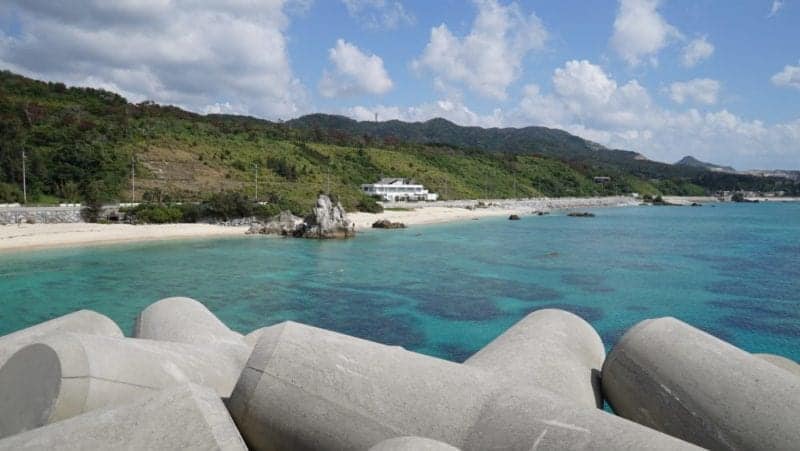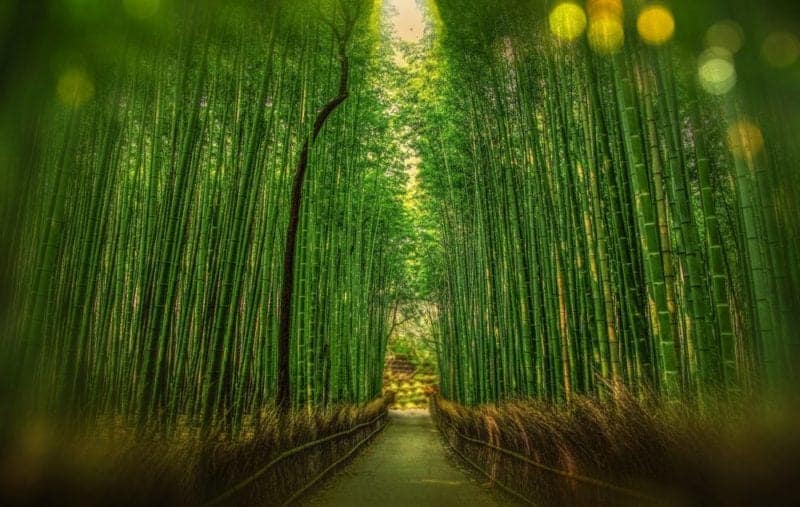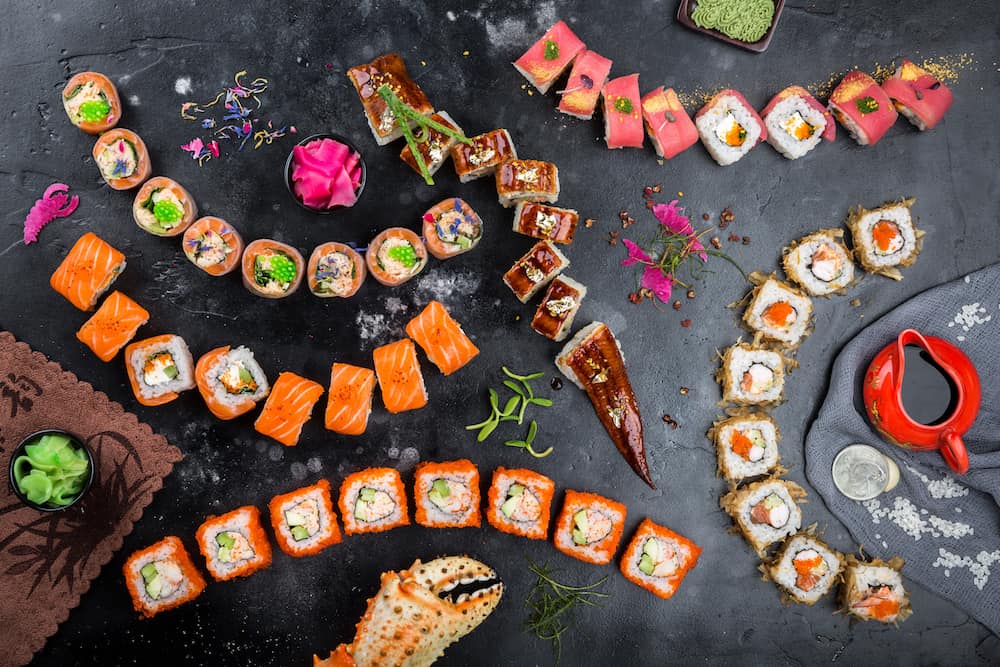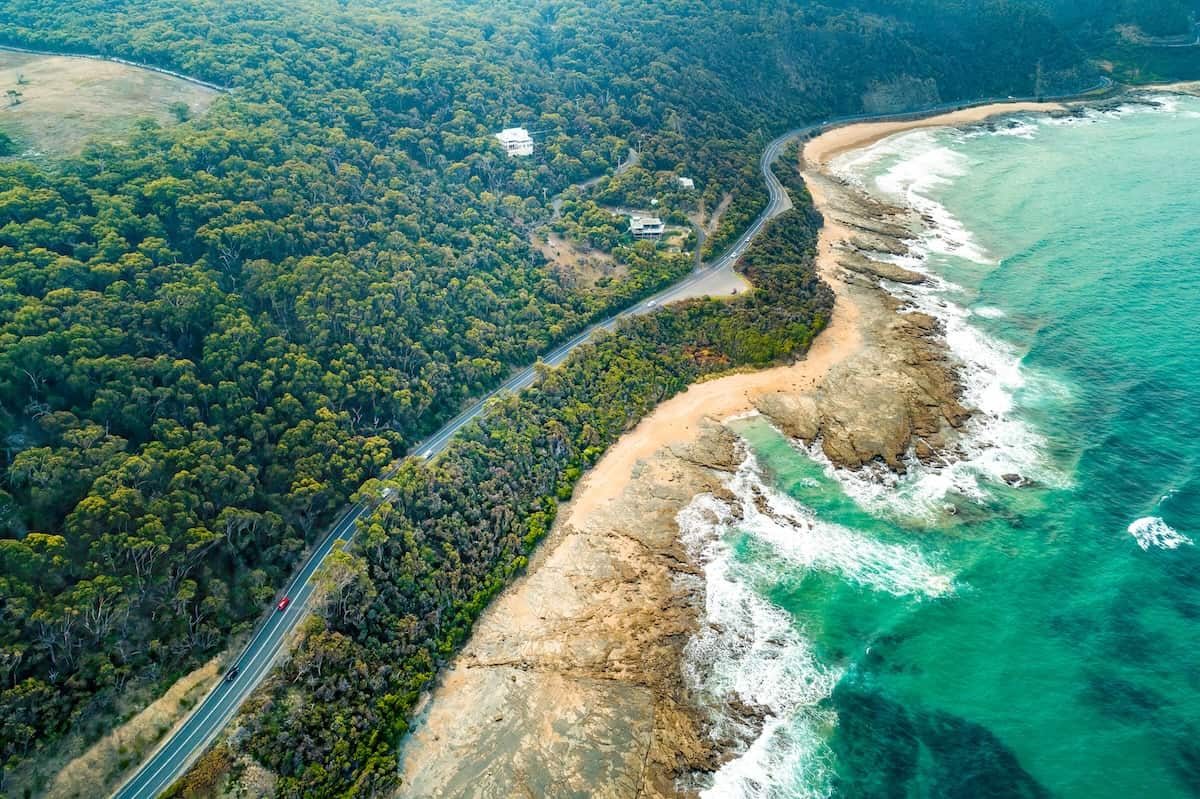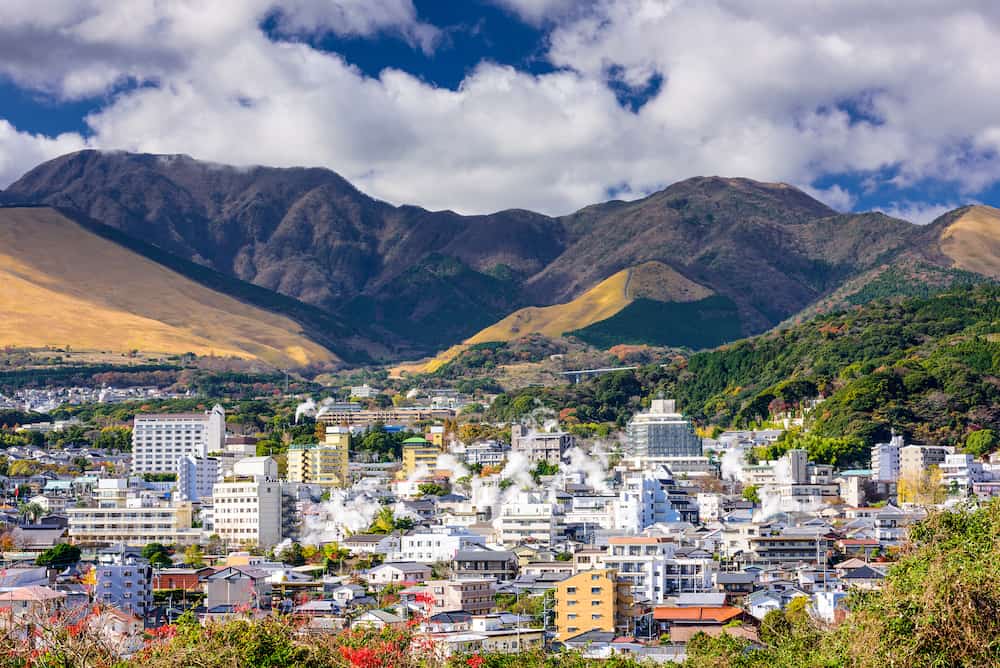3 Day Itinerary For Hiroshima
I’ve been to Japan a few times and have had the chance to extensively explore Hiroshima. On my most recent trip, I wanted to really discover as much as possible about Hiroshima in just 3 days, so I spoke with other travellers and locals to create a really well-rounded itinerary.
After lots of research and conversation, I created the perfect 3-day itinerary for Hiroshima that covers all the must-see sights – from historical monuments to local restaurants – so you don’t waste any time on your trip!
Whether you’re an experienced traveller or just starting out in Japan, this itinerary will provide an amazing experience of Hiroshima.
Hiroshima is a city in Japan steeped in history, resilience, and natural beauty. It is one of Japan’s most underrated tourist destinations and is renowned worldwide for its tragic past and remarkable recovery.
If you plan to visit the city, this 3-day itinerary for Hiroshima will help you plan your travels and enjoy the city’s vibrant present while honouring its solemn past.
As the first city in history to suffer an atomic bombing during World War II, Hiroshima City has become a fascinating tourist destination home to the Hiroshima Peace Memorial.
These stand as a symbol of peace and hope, with the Hiroshima Peace Memorial Museum serving as poignant reminders of the devastating consequences of war.
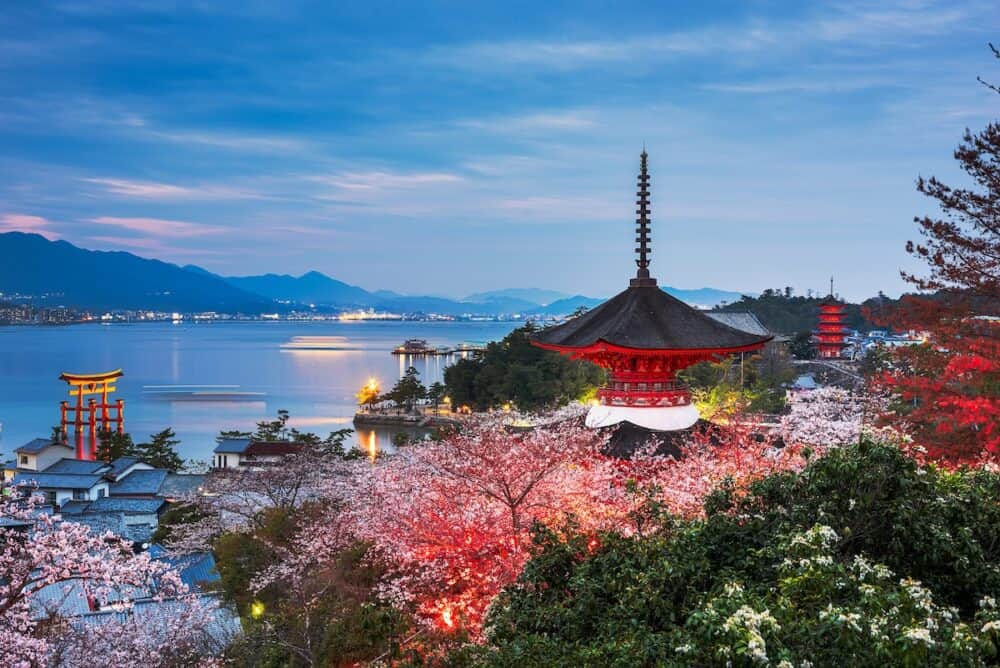
Beyond its historical significance, Hiroshima also boasts a thriving modern culture. The bustling streets are lined with shops, restaurants, and a vibrant nightlife. Food lovers will also be delighted to try Hiroshima’s famous okonomiyaki, a local Japanese street food.
During your 3 days in Hiroshima, you should also explore Miyajima Island. This island is just a short ferry ride from the city and is home to the iconic Itsukushima Shrine, a UNESCO World Heritage Site, and its famous floating torii gate.
To enjoy your trip to Hiroshima, you should visit from spring (March to May) or autumn (September to November) when the weather is mild and comfortable. Springtime brings cherry blossoms, enhancing the city’s landscapes with delicate pink hues, while Hiroshima’s autumn displays vibrant foliage, creating a picturesque setting for exploration.
Meanwhile, when deciding where to stay in Hiroshima, the best area is the city centre, near the Peace Memorial Park. This central location provides easy access to major attractions, restaurants, and transportation hubs that can cater to your travel needs.
Going on a 3 day trip to Hiroshima is something you should look forward to, especially when you have a well-planned itinerary. So, keep reading!
Plan your trip
Save on fees abroad with the Wise Card—use it at ATMs, restaurants, and for flights or hotels in over 150 countries. Manage 40+ currencies in real-time with the Wise app.
Need Help Planning?
- Cheap Flights: Find the best deals.
- Accommodation: From hostels to luxury stays.
- Car Rental: Affordable options worldwide.
- Sightseeing Tours: Explore without breaking the bank.
- Travel Adapter: One adapter for all your needs.
- Travel Insurance: Don’t risk it—stay covered.
This post includes affiliate links. Read my full disclosure and content policy.
Overview of 3 Days in Hiroshima Itinerary
Here’s a glance at what you’ll see and do in three days in Hiroshima:
Day 1 in Hiroshima
- Breakfast at Aki Cafe
- See the Hiroshima Castle
- Check out the Hiroshima Prefectural Museum
- Stroll around Downtown Hiroshima
- Have lunch at Okonomimura
- Visit the Hiroshima Peace Memorial Park
- Pass by the Atomic Bomb Dome
- Visit the Peace Memorial Museum
- Explore the Hiroshima Museum of Art
- Dinner at Yakigaki No Hayashi
Day 2 in Hiroshima
- Breakfast at Burajiru
- Travel by train to Miyajima Island
- Explore the Itsukushima Shrine
- Snap photos at the Great Torii Gate
- Lunch at Kakiya
- Visit the five-story pagoda and Senjokaku Hall
- Ride the Miyajima Ropeway
- Walk through the Uguisu route
- Shop at Omotesando Shopping Arcade
- Dine and drink at Hiroshima Neighborly Brewing
Day 3 in Hiroshima
- Grab some breakfast at Andersen Hiroshima
- See the Mitaki-Dera Temple
- Stroll around Shukkeien Garden
- Visit the Assumption of Mary Cathedral
- Lunch at Ekohiiki
- Visit Hiroshima Peace Pagoda
- Make paper cranes at Hiroshima Orizuru Tower
- Shop at Hondori Walking Street
- Have dinner at Nakashima Ryori
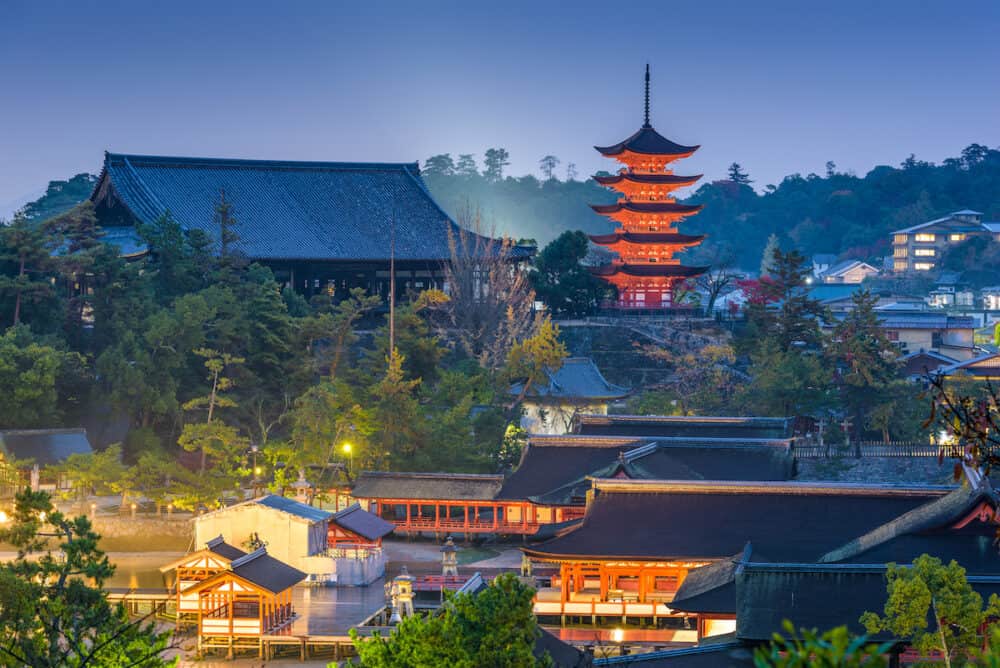
Day 1 in Hiroshima
Breakfast at Aki Cafe
Before exploring Hiroshima, head to Aki Cafe, a cosy and welcoming spot known for its delicious breakfast. This will be your first meal in Hiroshima, and Aki Cafe is only suitable as they serve a variety of Japanese and Western-style breakfasts, such as traditional rice dishes to fluffy pancakes.
Check out their signature Hiroshima-style toast, topped with local ingredients like butter and honey or savoury options like cheese and ham. They also have freshly brewed coffees, teas, and fruit juices to accompany your meal.
See the Hiroshima Castle
For the first stop of your three days in Hiroshima, head over to Hiroshima Castle, also known as Carp Castle.
The five-story castle’s striking appearance and its multi-tiered roofs and wooden architecture make for impressive photo opportunities. Still, it’s not the only reason it became a famous destination.
Inside, you’ll find a museum showcasing artefacts and exhibits about the castle’s history and the feudal era. As you explore the castle’s grounds, you will also find some shrines, ruins and reconstructed buildings of Ninomaru.
Holding a long history in Hiroshima, this castle town was built to be the physical and economic centre of the city. It was built in 1589, and ever since then, it has served as an essential seat in Western Japan that was also spared by demolishment.
However, like the rest of the city, it was destroyed by the atomic bomb and the castle that stands today, including the beautifully landscaped gardens with cherry blossom trees, is already a renovation after Hiroshima recovered from the tragedy.
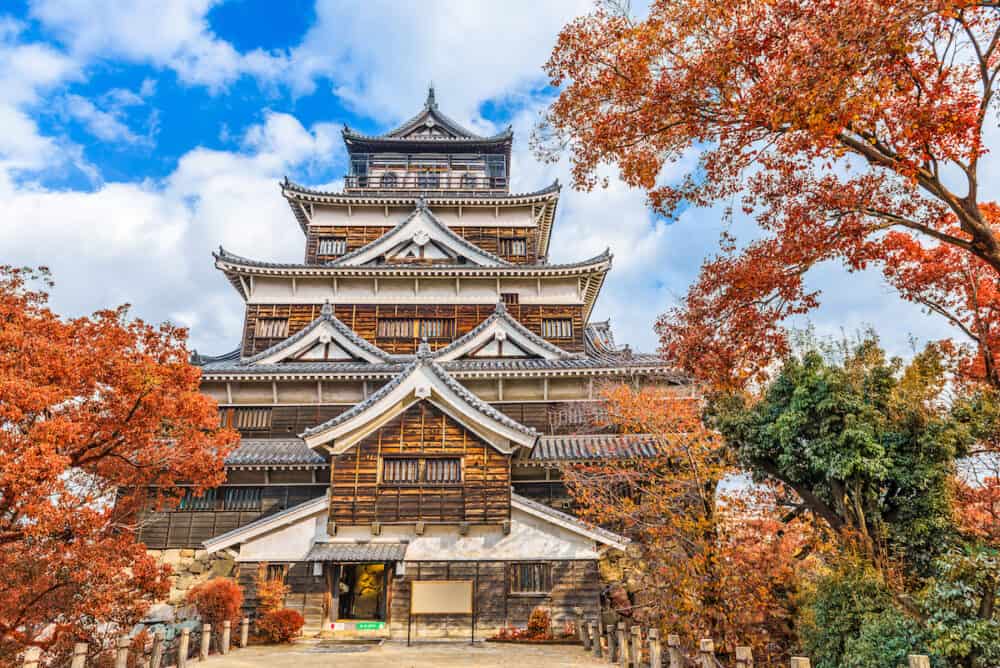
Check out the Hiroshima Prefectural Museum
Just a few minutes walk from the Hiroshima Station and Castle is the Hiroshima Prefectural Museum. Here, you can discover the rich cultural heritage of Hiroshima Prefecture as it offers a wide range of exhibits, including local crafts, traditional costumes, archaeological findings, and artworks.
You can also engage with interactive displays that provide insights into the region’s natural wonders and historical milestones. At times, the Hiroshima Prefectural Museum also holds a special exhibit primarily related to anniversaries and stories about artists of the prefecture.
Hiroshima Prefectural Museum is a great place to learn about the prefecture’s diversity and the contributions of its people.
Stroll around Downtown Hiroshima
Strolling downtown is one of the best things to do in Hiroshima and should be included on your Hiroshima itinerary.
After checking out two of Hirsohima’s essential attractions, spend the rest of your morning exploring the bustling area filled with shops, restaurants, and entertainment options.
This may be one of the busiest areas in the prefecture, so you can take this chance to immerse in the local life while observing the Japanese people run about their daily life.
Explore the covered shopping arcades, such as Hondori Street and Fukuya Department Store, where you can find souvenirs, clothing, and more. There is also plenty of modern architecture to check out and let you experience the vibrant side of the city.
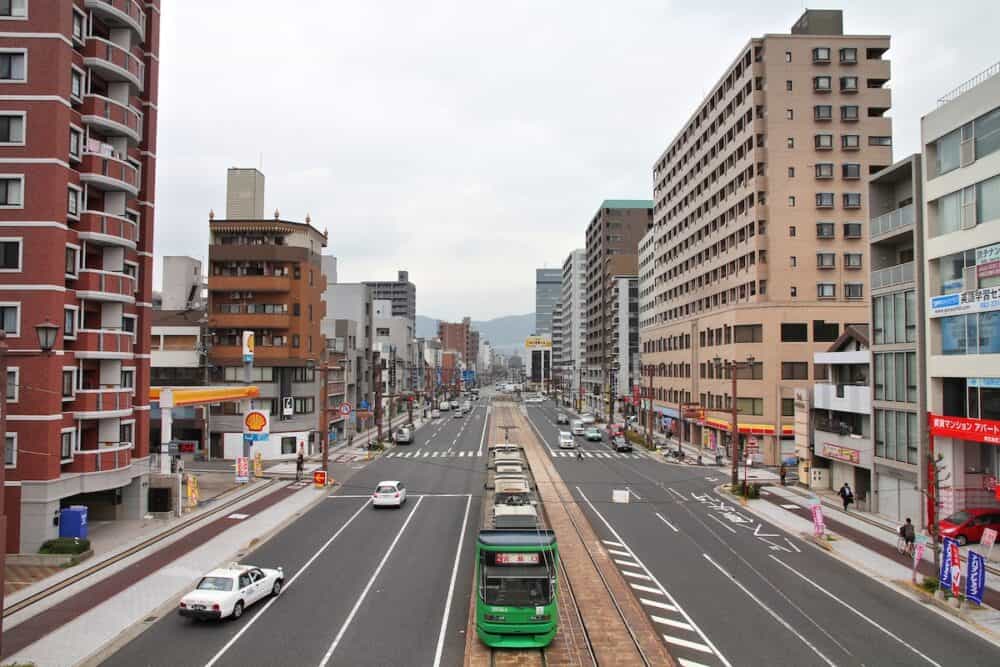
Have lunch at Okonomimura
Located within the downtown area is Okonomimura, which is Hiroshima’s Okonomiyaki Village. You cannot have 3 perfect days in Hiroshima without getting a taste of the region’s most famous dish, okonomiyaki, and this multi-story building is where you can get the best of the best.
Okonomimura, which translates to okonomi village, is a favourite place for locals and tourists to visit for casual dining. Inside the building, you’ll find at least 24 counter-style okonomiyaki restaurants, each offering a different flavour and taste to the local dish.
The joy of visiting these restaurants is watching skilled chefs prepare your meal right before you on the teppan (griddle). Whether you prefer classic Hiroshima-style or a modern twist on this savoury pancake, going to Okonomimura will be a great gastronomical experience.
Some of the best picks at Okonomimura are Hassho, Takenoko and Momotarou. Many more restaurants are inside, so explore and discover them yourself.
Visit the Hiroshima Peace Memorial Park
After tasting authentic Okonomiyaki, head to Hiroshima’s most famous attraction, the Peace Memorial Park. Unlike any other destination in Japan, this spot in Hiroshima holds a special place for the locals as it is a poignant reminder of the city’s tragic past and a symbol of hope for peace.
Before the atomic bomb was dropped in the prefecture, the peace park was a political and commercial centre. When the government started its rebuilding and renovation of the structure in the city, it was decided that they make the area a peace memorial park rather than redevelop it to what it was like before.
At the park, you can walk among the various memorials, including the Children’s Peace Monument and the Flame of Peace, which burns until nuclear weapons are abolished. Take a moment of silence by the Cenotaph, inscribed with the victims’ names. This is also where the Peace Memorial Museum and A-Bomb Dome are located.
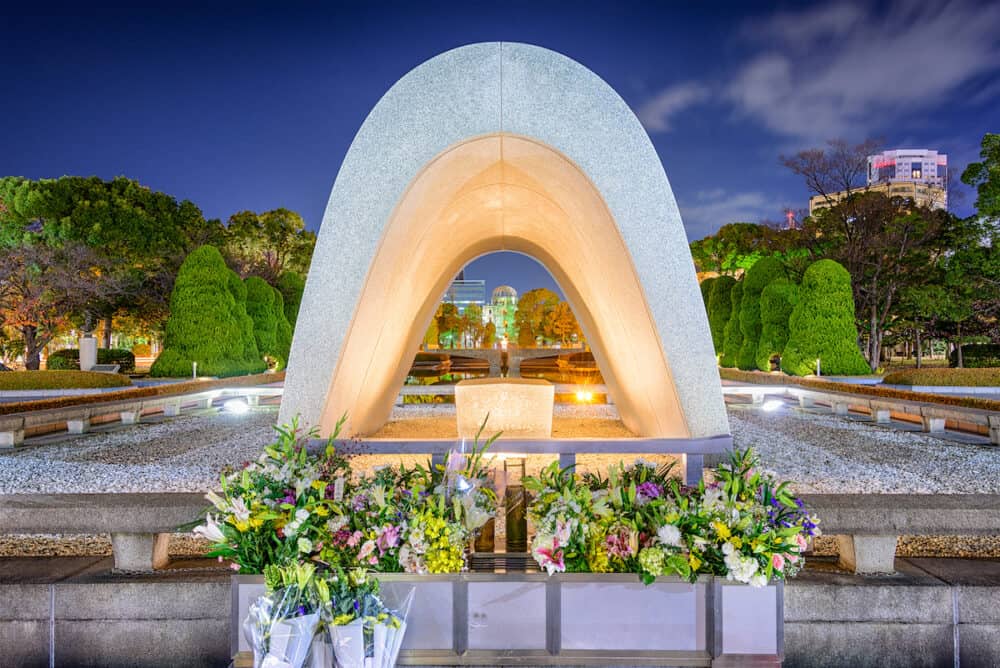
Pass by the Atomic Bomb Dome
As mentioned, while exploring your 3 days in Hiroshima, you’ll come across the Atomic Bomb Dome. This is one of the buildings that survived the 1945 atomic bombing.
Before the atomic bombing, the building used to be a location to promote Hiroshima’s industries. This UNESCO World Heritage Site stands as a stark reminder of the devastating impact of nuclear weapons and is a powerful symbol of peace and resilience.
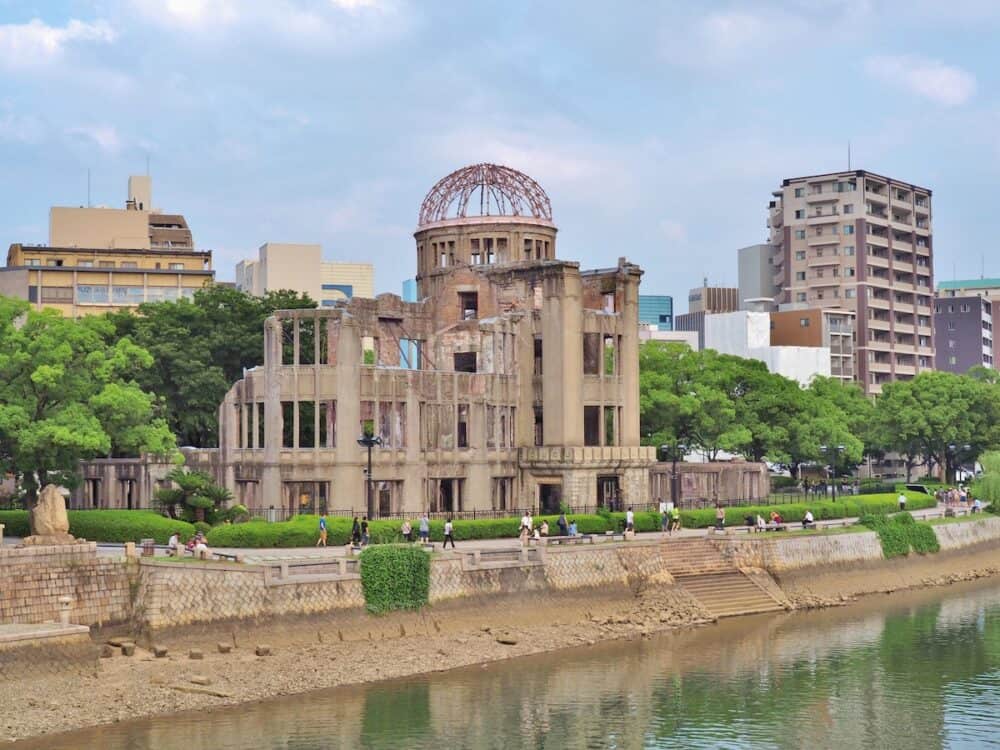
Visit the Peace Memorial Museum
The Peace Memorial Museum is the park’s main facility, consisting of two buildings. This museum surveys the history of Hiroshima and the advent of the nuclear bomb, focusing on the outcome of the bombing on the prefecture’s citizens and nearby areas.
It opened in 1955, intending to show generations of people what it was like for the victims and survivors of the tragedy.
When you visit, you’ll get to see photographs and materials showing the remains of the A-bomb survivors and the history of Hiroshima before and after the A-bomb was dropped.
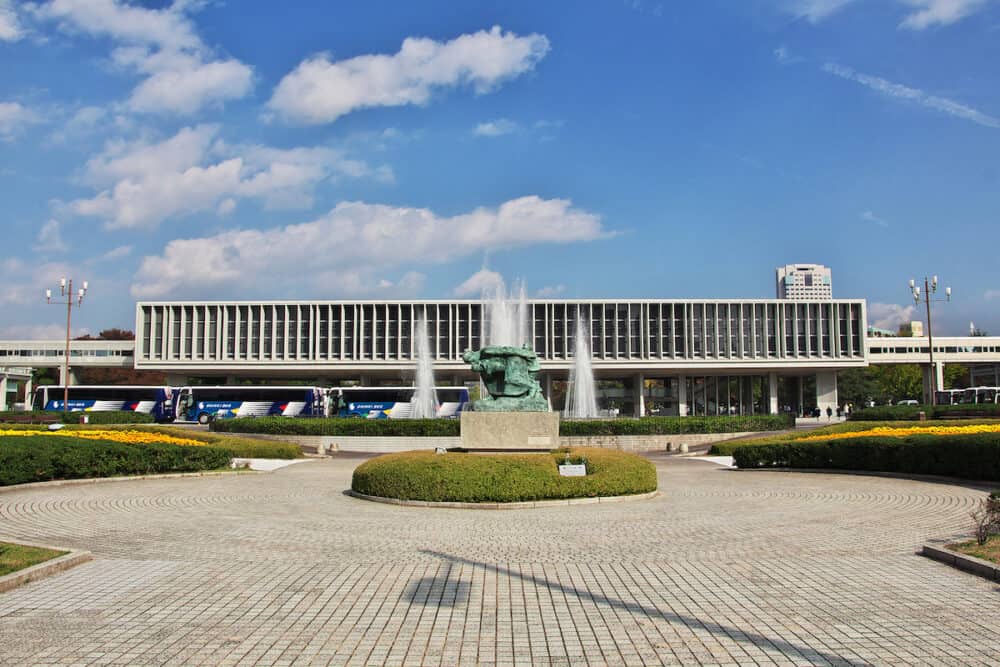
Explore the Hiroshima Museum of Art
If you are an art enthusiast looking for things to do in Hiroshima Japan, visiting the Hiroshima Museum of Art is a must. This museum houses an impressive collection of Japanese and Western artworks, from traditional Japanese paintings to contemporary pieces.
The displays and exhibits of the museum offer a diverse range of artistic expressions, so take your time to admire and learn the meaning behind each piece of art. The museum was built with the theme “For love and peace,” with the victims of the atomic bomb in mind.
The museum is open all week except for holidays, Mondays and special exhibitions.
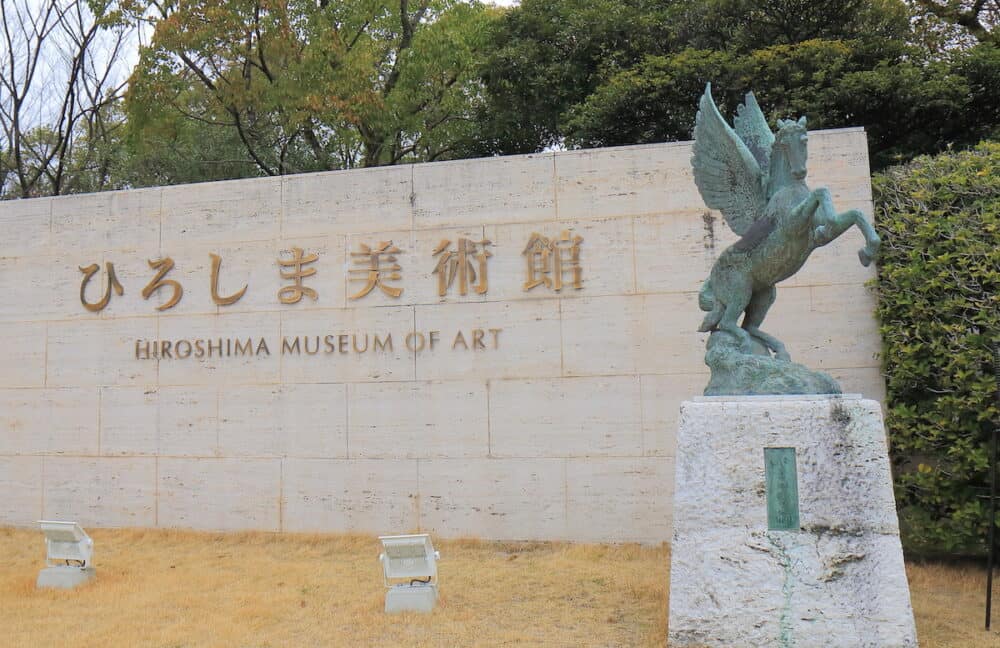
Dinner at Yakigaki No Hayashi
End your day with a delicious dinner at one of Hiroshima’s famous restaurants, Yakigaki No Hayashi.
This restaurant is a renowned place specialising in yakigaki (grilled oysters). Hiroshima is famous for its plump and flavorful oysters, making it a must-try when travelling to the city.
Aside from this local restaurant serving yakigaki, they also have several seafood dishes. Pairing your meal with local sake or a refreshing beverage would be perfect.
Day 2 in Hiroshima
Breakfast at Burajiru
Start your second day in Hiroshima with a delightful breakfast at Burajiru, a charming café known for its cosy ambience and delicious Western-style morning fare.
Burajiru is one of Hiroshima’s local favourites, especially when you want a treat of fluffy pancakes, freshly baked pastries, or a hearty breakfast sandwich.
All these can be perfectly accompanied by expertly brewed coffee or speciality teas, plus the warm and welcoming atmosphere sets the tone for a great day ahead.
Travel by train to Miyajima Island
One of the most famous day trips from Hiroshima is to visit Miyajima Island. You can hop on a train from Hiroshima and then ride the ferry or direct boat to reach the island. For this trip, hop on a train from Hiroshima to Miyajimaguchi Station, then take a ferry from the port.
The scenic train from Hiroshima to Miyajima offers picturesque views of the Seto Inland Sea and the surrounding landscape, making it a pleasant and relaxing ride. It takes only 25 minutes but covers this trip if you plan to use your Japan Rail Pass.
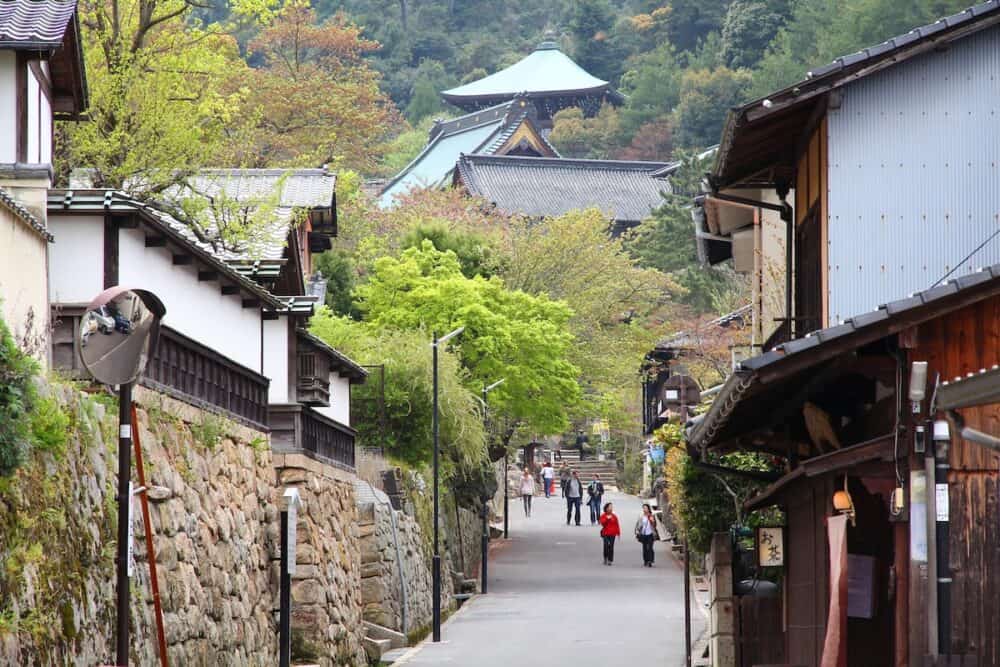
Explore the Itsukushima Shrine
On the island of Miyajima is where you’ll find the famous UNESCO World Heritage Site, Itsukushima Shrine. The shrine’s name, Istukushima, means “island of worship” and was coined from its history as an island worshipped as a God.
Regarded as one of the three most scenic spots in Japan, the shrine became a famous attraction because of its picturesque sight. It is built on water, so it is also famously known as “the floating shrine”.
There’s much to explore and see during your visit to the area. Itsukushima’s main shrine is divided into different parts, such as the Purification Hall and the stage for bugaku (court music).
There is also an arched bridged inside the shrine premise, which was said to be used by Imperial messengers that linked the shrine to the mainland.
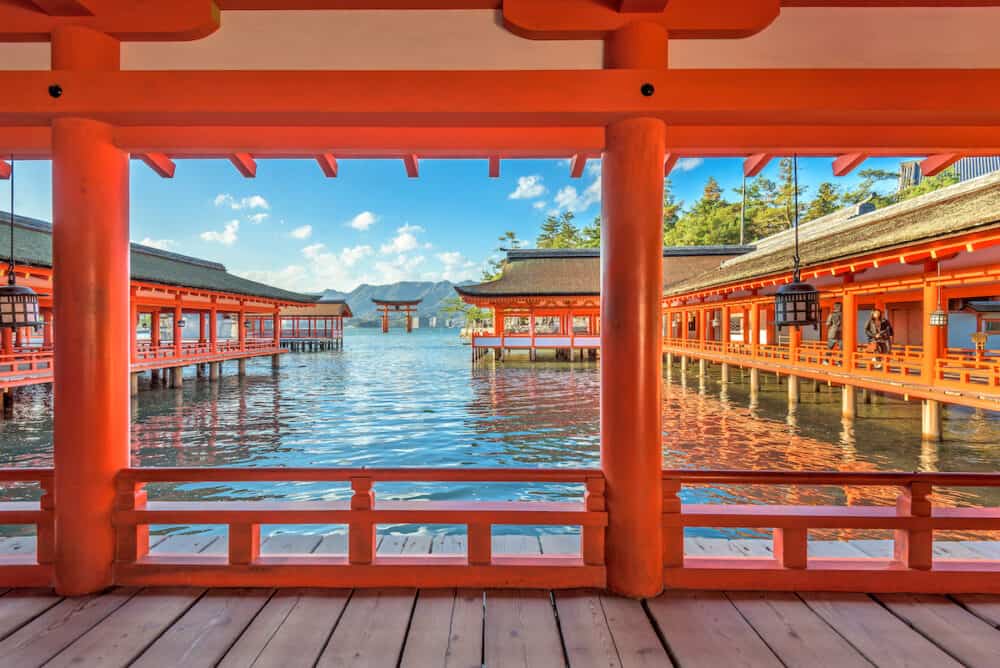
Snap photos at the Great Torii Gate
As mentioned, the famous excellent torii gate that “floats” on the water is also located within the premise of the shrine. Depending on the tide, you can walk up to the gate or take photos from the shoreline.
Some people prefer to see the gate during high tide to see what it looks like floating. Meanwhile, if the tide is low, this is the best time to admire the gate’s grandeur against the backdrop of the island’s natural beauty up close.
So, depending on the time of your visit, it is good to be aware of the timings of the tides. Either way, you can take advantage of the opportunity to capture memorable photos at the Great Torii Gate, one of Japan’s most recognisable landmarks.
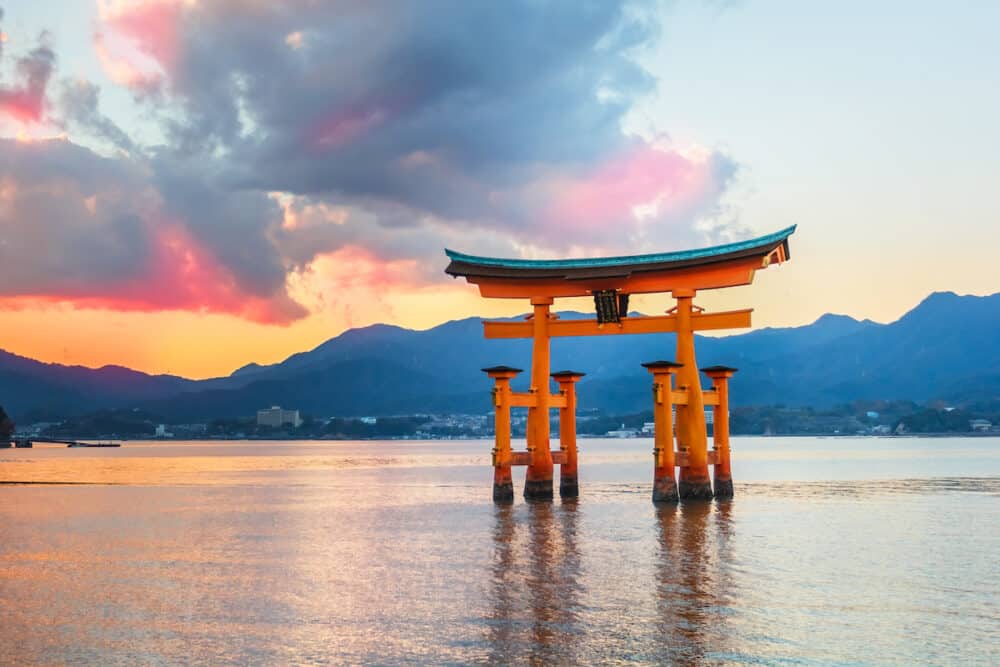
Lunch at Kakiya
One of Miyajima’s most famous dining places is Kakiya, a seafood restaurant known locally for serving the freshest oysters on the island.
The local restaurant specialises in Hiroshima-style cuisine. Here you can feast on fresh catches from the Seto Inland Sea, including oysters, grilled fish, and sashimi. Their restaurant is quaint and attentive service, which ensures a delightful dining experience.
Visit the five-story pagoda and Senjokaku Hall
Aside from the Itsukushima Shrine, another famous tourist destination on the island is the Senjokaku Hall sitting atop a hill. Down the hall is also the iconic and picturesque five-story pagoda you will also visit.
The Senjokaku Hall was first built for the great warlord Toyotomi Hideyoshi. However, the shrine’s construction was not completed until today because the passing of the founder happened just 11 years later.
Still, the vibe of incompleteness adds to the charm of the place. The building is without walls, allowing wind to flow from every direction. This has made Senjokaku Hall a place to relax and enjoy the panoramic view of the island from atop a hill.
As you descend the hill, you will also find the five-story pagoda, a beautiful wooden structure surrounded by lush greenery. The main deity in the pagoda is the Buddha of Medicine, built in Japanese style with strong Chinese influence.
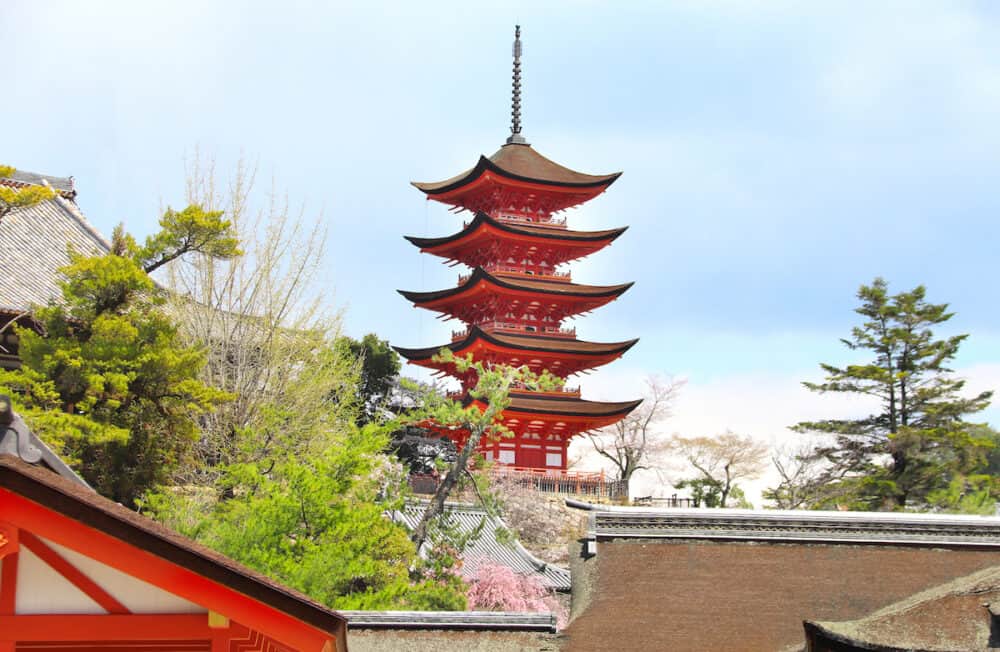
Ride the Miyajima Ropeway
Something to look forward to in the 3 days in Hiroshima itinerary is a scenic ride at the Miyajima ropeway. Riding the cable car, you can enjoy panoramic views across the bay.
The cable car departs from Momijidani Ropeway Station and will take you to the Shishiiwa Observatory. After descending from the cable car, you can take a suggested hike route from Misen Hondo to the Kannon-do Hall.
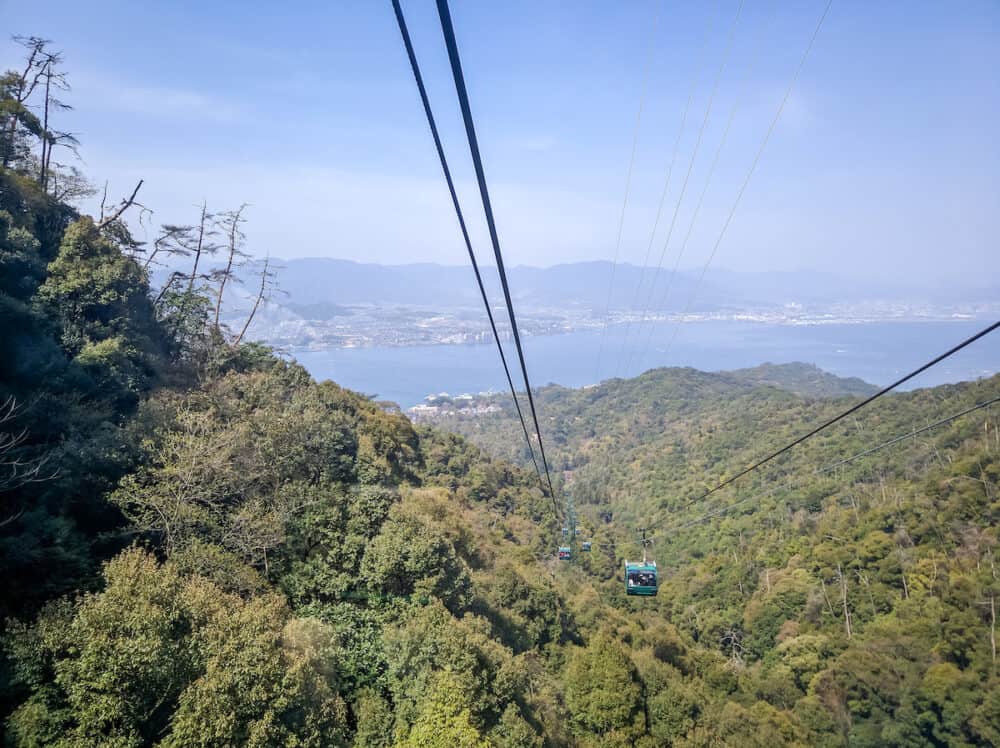
Walk through the Uguisu route.
The island of Miyajima offers natural landscapes and scenic paths, including the Uguisu route. So, if you’re up to enjoying a happy stroll around nature, take the Uguisu route, a nature trail that winds through the forests of Miyajima Island.
The Uguisu route stretches for 2 kilometres and will take you from the residential area through the forest and to the ropeway stop.
Along the way, you can enjoy plenty of cherry blossoms if you visit during the cherry blossom season (which we highly suggest). You can also enjoy the tranquillity of the surroundings and listen to the melodious chirping of the uguisu (Japanese bush warbler) birds that give the trail its name.
Shop at Omotesando Shopping Arcade
Before returning to the main island of Hiroshima, you must stop by the island’s famous Omotesando Shopping Arcade. This is the main street of Miyajima, which is dedicated to souvenir shops, local craft stores, and local eateries.
This is the perfect place to explore street food, from noodles, okonomiyaki and even kebab. There are also plenty of traditional crafts, handcrafted goods, and Miyajima-themed souvenirs that can serve as unique memorabilia for your visit to the island.
Dine and drink at Hiroshima Neighborly Brewing
After returning from Miyajima island, head to Hiroshima Neighborly Brewing, where you can enjoy a meal and a drink.
Hiroshima Neighborly Brewing is a famous brewery and restaurant that serves a range of craft beers, each with distinct flavours. Pair your meal with a glass of your choice. This could be a great chance to observe and communicate with locals.
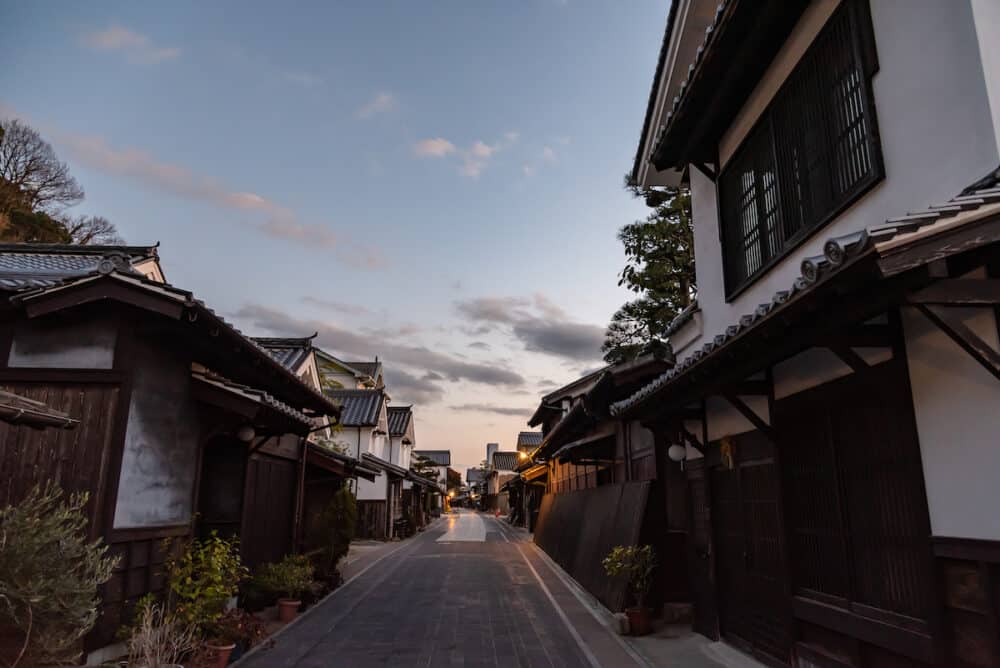
Day 3 in Hiroshima
Grab some breakfast at Andersen Hiroshima
Andersen Hiroshima is a famous local bakery that offers a delightful selection of pastries, sandwiches, and Japanese-style breakfast dishes.
Since you’ll need to travel to another ward away from downtown Hiroshima, you can quickly grab some pastries here and have them on the way to your next stop.
We highly suggest you try Andersen Hiroshima’s freshly baked Danish pastries. Still, you can also opt for a more traditional Japanese breakfast set to fuel yourself for a day of exploration.
See the Mitaki-Dera Temple
Escape the hustle and bustle of the city and venture to Mitaki-Dera Temple, a serene Buddhist temple nestled on the slopes of Mount Mitaki, up north of Hiroshima City. The temple complex is surrounded by lush greenery, providing a peaceful environment for contemplation and relaxation.
Mitaki is named after the three waterfalls situated within its grounds. It was built in dedication to Kannon, the Goddess of Mercy in Wakayama, and was later moved to Hiroshima to help comfort the souls of those killed by the atomic bomb.
As you explore the wooden structures, pagodas, and serene gardens that make this temple a hidden gem, you’ll also come across several other memorials for the atomic bomb victims. There will also be innumerable stone Jizo statues, which is the protector of women, children, and travellers.
If you want to stop by for refreshments, a small, rustic-looking teahouse is inside to enjoy simple traditional Japanese food.
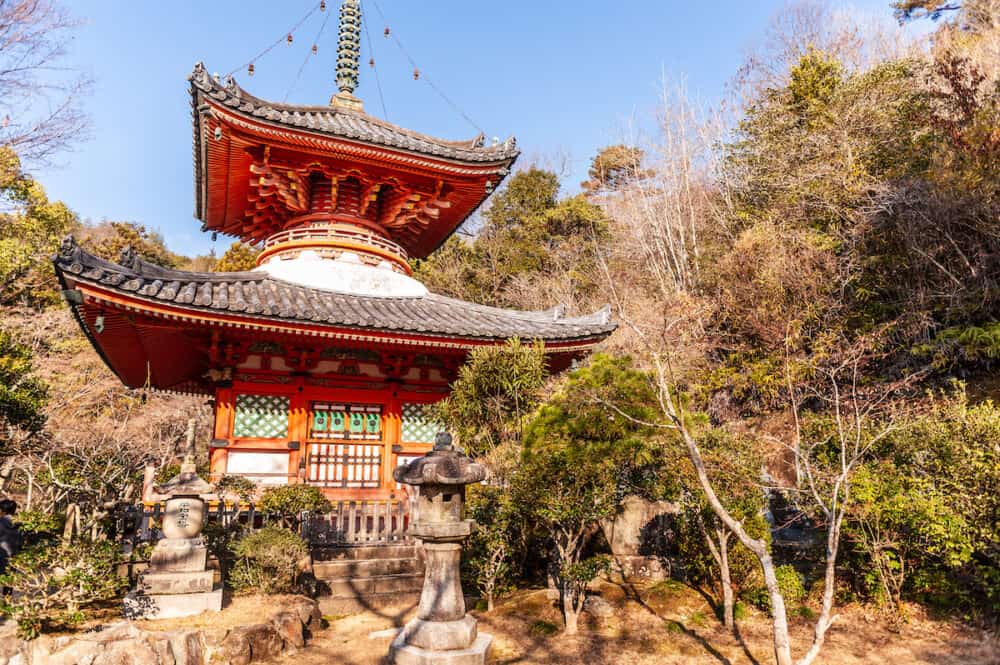
Stroll around Shukkeien Garden
After coming from Mitaki-Dera temple, you can stroll around Hiroshima’s Shukkeien Garden. This Japanese garden has a long history dating back to 1620, with the completion of the Hiroshima Castle.
It is famous for its garden displays, featuring several traditional Japanese aesthetics. The entire garden is connected by a path winding around a pond at the park’s centre.
Shukkein Garden was also designed to mimic a variety of natural formations and scenic views, such as valleys, mountains and forests.
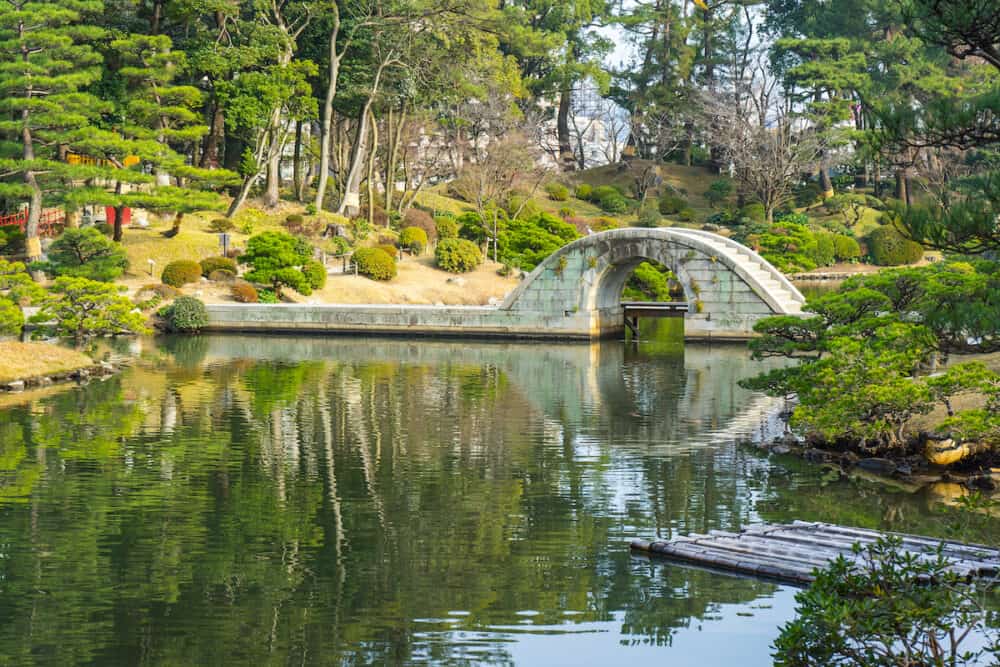
Visit the Assumption of Mary Cathedral
The Assumption of Mary Cathedral, also known as the Memorial Cathedral of World Peace, is another must-visit, no matter how many days in Hiroshima you will be spending.
This cathedral was built to serve as a venue where people can pray for world peace and remember the victims of the Hiroshima atomic bombing and World War II, disregarding religious beliefs.
It has become a famous tourist destination, not only because of its importance to the Catholic community but also because of its architectural structure. With the blend of Japanese symbolism and Western elements, the cathedral’s design makes it a worthwhile visit.
Lunch at Ekohiiki
After hopping from one destination to another for the whole morning, you deserve a good treat. Head over to Ekohiiki for another oyster meal for this trip. Just like okonomiyaki, oysters are a beloved delicacy and are something the city boasts of.
The region has been cultivating oysters for over 500 years, so there’s no doubt. While there are plenty of oyster restaurants in Hiroshima, Ekohii is rather famous for its deep-fried oyster set (kaki fry).
They coated fresh oysters with crunchy panko breadcrumbs and served it with a creamy tartar-like sauce.
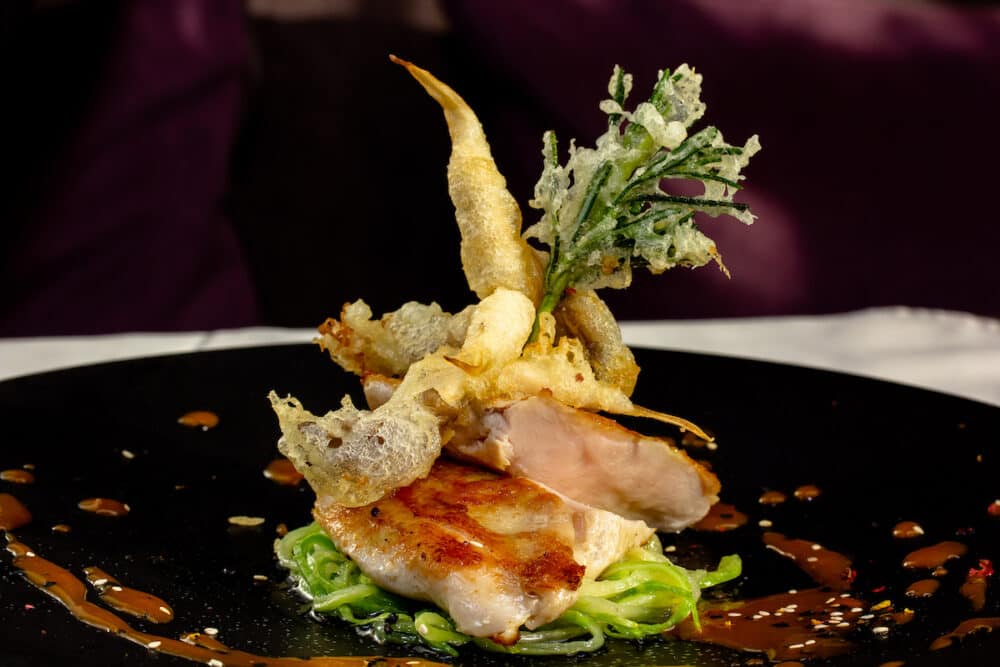
Visit Hiroshima Peace Pagoda
The Hiroshima Peace Pagoda, also known as Shanti Stupa, is a place to experience a symbol of peace and harmony. The pagoda’s pristine white appearance starkly contrasts the surrounding greenery and is a powerful reminder of the city’s quest for peace.
It sits on top of Mount Futaba, where the solver dome houses the ashes of the Buddha and thousands of several memorial stones that represent a prayer for peace offered by residents and visitors.
The pagoda is close to Hiroshima station, making it an accessible destination. You’ll just need to walk through a hiking trail from the Toshogu shrine, leading you over a tunnel of red torii gates and small shrines.
When you reach the top, you’ll get a great view of the city, which is the best moment to reflect and appreciate the significance of this monument.
Make paper cranes at Hiroshima Orizuru Tower
Hiroshima Orizuru Tower is one of the most recent buildings that opened in the city. It is located beside the A-Bomb Dome, standing tall at 50 meters.
The building was first an office building and was later redeveloped into an area for visitors to visit and get a great view of the city from an observation deck on top.
It also houses different souvenir shops, cafes and an interactive multimedia zone where you can use the ancient Japanese art of origami by making paper cranes.
Folding paper cranes is believed to bring hope and healing and is a tradition that the Japanese have passed on from different generations.
After getting a great view of the city from other observation decks, you can enjoy this heartwarming activity and contribute your paper cranes to the displays that advocate for a world free of nuclear weapons.
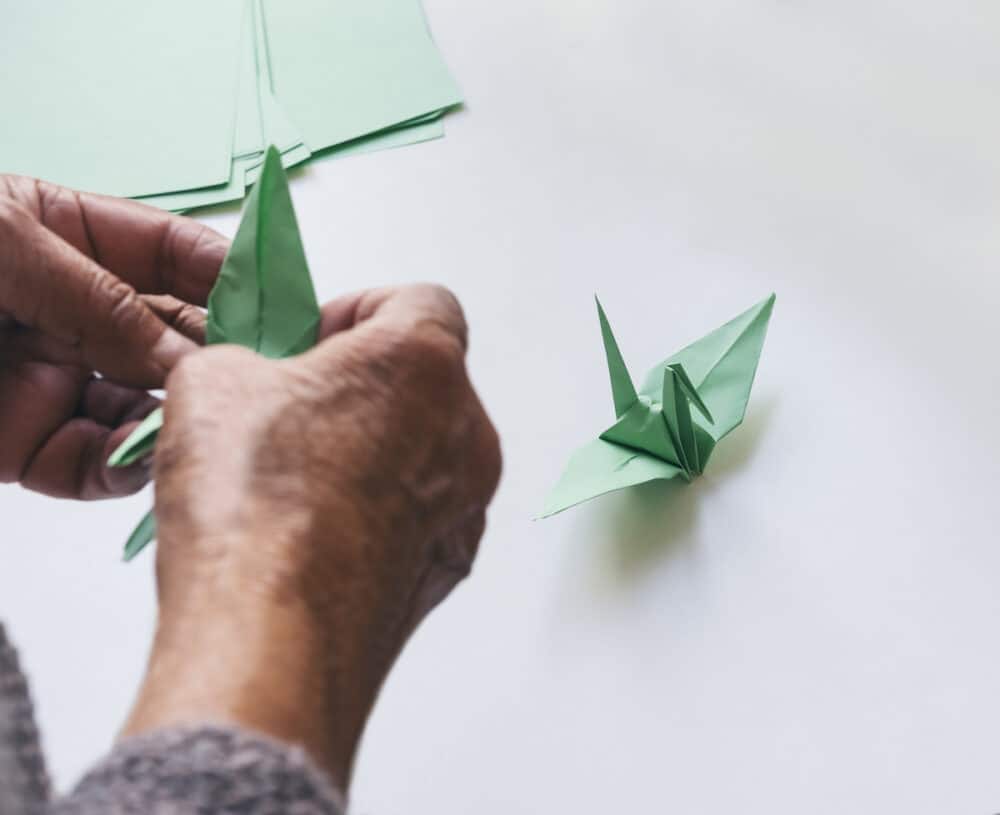
Shop at Hondori Walking Street
A visit to Hiroshima will only be complete with shopping at the famous Hondori Walking Street. This bustling pedestrian area is lined with shops, boutiques, and cafés where you can find various products to suit your preferences.
It’s located within Hiroshima’s downtown, making it a convenient and accessible place to shop. You can also enjoy the lively atmosphere and street performances while you walk around the area.
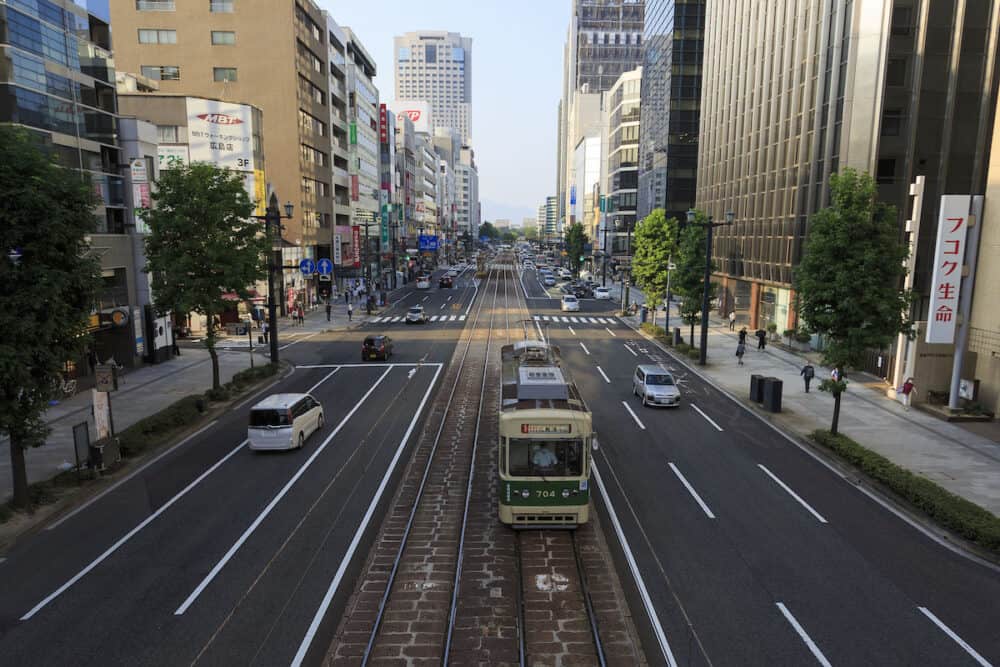
Have dinner at Nakashima Ryori
Since you’ve already tried okonomiyaki, oysters and other street food during your 3 day Hiroshima trip, this time, you should dine in at one of the world’s most affordable 3 Michelin star restaurants, Nakashima Ryori.
This restaurant offers an affordable, incredible-tasting menu compared to other Michelin restaurants. You get to enjoy good food and have a unique dining experience with food served on dining wares over 200 years old.
Tours in Hiroshima for 3 days
Bike Tour
For first-time tourists to Hiroshima, you can easily roam around the city centre while going on a bike tour with a professional tour guide.
On this tour, you will visit several top sights in the city, including the Peace Park, Gokoku Shrine, Shukkei-en Garden, and the Memorial Cathedral for World Peace.
While pedalling your way through the city, not only will you see these important and famous Hiroshima sites.
You will also get to learn more about their historical background and cultural importance. This tour is beginner friendly because the path you’ll be taking is almost a hundred percent flat.
Cruise Tour
Whether you stay in Hiroshima or Miyajima, this Hiroshima Miyajima day cruise tour is an excellent alternative to maximise your time in the city.
You will first meet up with your group tour and guide at the Hiroshima Station, and from there, you will be going on a cruise to the island of Miyajima.
You will also see famous sites in Hiroshima, including the peace memorial park, memorial museum and the atomic bomb dome.
This tour already includes all local ferry and train tickets you will need to travel from Hiroshima to Miyajima and back.
Recommended tours in Hiroshima
- Hiroshima / Miyajima Full-day Private Tour with Government Licensed Guide
- Japanese Traditional Archery Experience Hiroshima
- Hiroshima Cycling Peace Tour with Local Guide
- Hiroshima in a Nutshell: Morning Bike Adventure
- Hiroshima Bar Hopping Food Tour
- An Amazing set of Cultural experience: Kimono, Tea Ceremony and Calligraphy
- Authentic Tea Ceremony Experience while wearing Kimono in Miyajima
- All-inclusive Hiroshima Nighttime Food and Cultural Immersion
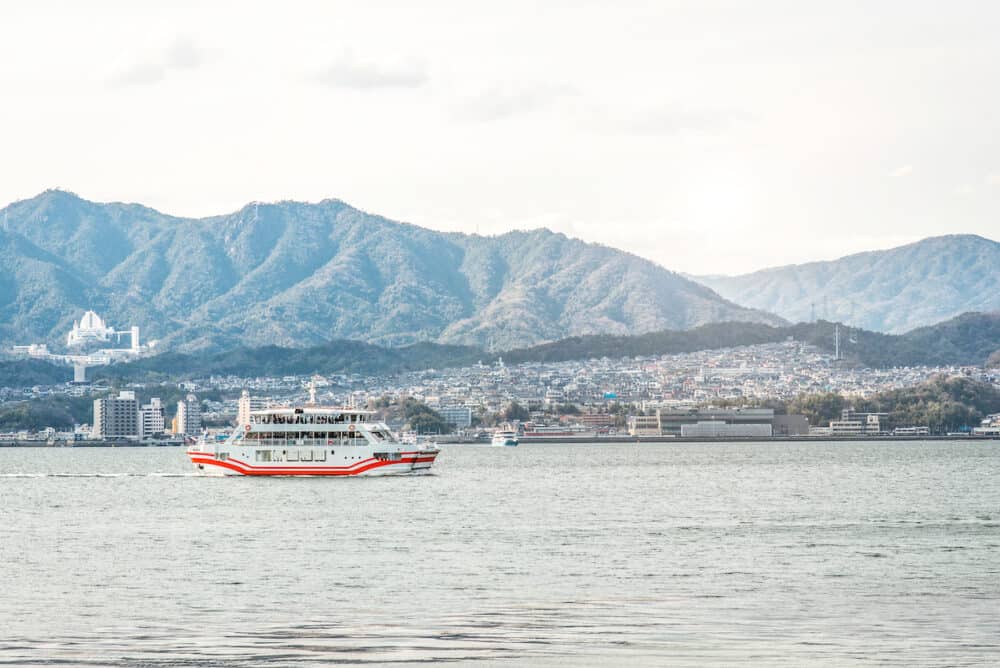
3-Day Itinerary for Hiroshima Wrap-up
Now that you know what to see in Hiroshima in 3 days, you can skip the tedious planning and use this comprehensive itinerary for your trip to this marvellous city. All you have to do is pack your things and ensure you’re ready for an adventure of a lifetime.
Read more on Japan:
- 5 day Itinerary for Japan
- Budget Travel Guide for Japan
- 10 Dishes you Must Try in Japan
- Where to stay in Matsuyama
- 18 Things to do in Matsuyama – That People Actually Do!
- 48 hours in Matsuyama – 2 Day Itinerary
- Ultimate Travel Guide to Matsuyama
- Where to stay in Oita Prefecture
- 18 Things to do in Oita, Japan – That People Actually Do!
- 3 days in Oita Prefecture + a stop in Tokyo
- The Ultimate Travel Guide to Oita, Japan



